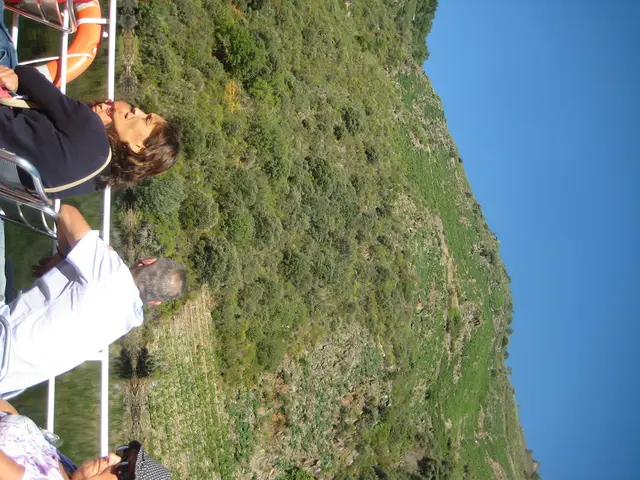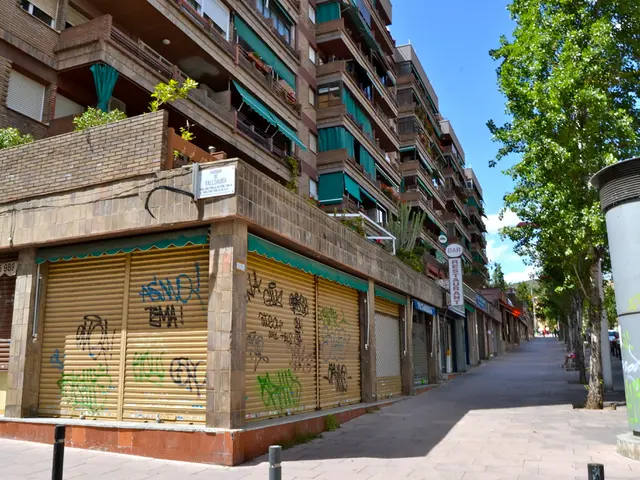Detailed Overview of the Meiji Jingu Shrine: A Comprehensive Study
Meiji Jingu Shrine, a tranquil oasis in the heart of Tokyo, is a must-visit tourist attraction that immerses visitors in a peaceful atmosphere amidst the city's hustle and bustle. This renowned Shinto shrine is renowned for its historic architecture and proximity to popular destinations such as Yoyogi Park and Harajuku Station.
The History of Meiji Jingu Shrine
Dedicated to Emperor Meiji and his wife Empress Shoken, this shrine was built during the Meiji period to commemorate their spirits. The construction, which began after their deaths in 1912 and 1914, respectively, took five years to complete, and it was formally dedicated in 1920. During the Showa period (1926-1989), most of the shrine complex was destroyed due to air raids during the Second World War; however, donations from around Japan enabled its restoration in 1958. Today, Meiji Jingu Shrine remains a symbolic tourist attraction for the Shibuya and Harajuku areas and is particularly known as the most visited shrine in Japan during the first few days of the new year, attracting more than three million visitors annually.
Visiting Meiji Jingu Shrine
Upon entering the shrine, visitors are greeted by a towering wooden torii gate. This spiritual gate can be found at the south, north, or west entrances. The gravel path leading to the shrine is lined with over 170,000 trees donated from across Japan, fostering a serene atmosphere that creates a stark contrast to Tokyo's urban setting. On occasion, visitors may witness traditional wedding ceremonies or stage performances, such as folk performing arts or drum plays.
Exploring the Grounds Around Meiji Jingu Shrine
Covering 70 hectares, the shrine complex is filled with fascinating spots to discover, including:
Sake & Wine Barrels
Along the approach leading to the shrine, visitors will find over 200 sake and wine barrels. These traditional barrels have been donated by famous sake breweries from around the country and serve as a popular spot for taking iconic photographs.
Couple Camphor Trees
Emblematic for their spiritual significance, visitors can find two giant camphor trees on the left side of the main shrine. These trees, known as the Couple Camphor Trees, are tied together with a sacred rope, symbolizing the deep bond between Emperor Meiji and his wife.
Meiji Jingu Museum
For those interested in learning more about the shrine's history, a visit to the Meiji Jingu Museum is highly recommended. Modern facilities feature displays of valuable artifacts used by Emperor Meiji and Empress Shoken, as well as information about annual events at the shrine. The museum was designed by renowned Japanese architect Kuma Kengo.
Kiyomasa's Well
The tranquil Kiyomasa's Well can be found in the Meiji Jingu Inner Garden and is said to bring good fortune. The well's unique name commemorates Kato Kiyomasa, a famous Samurai warrior of the 16th and 17th centuries.
Yoyogi Park
Adjacent to Meiji Jingu Shrine, Yoyogi Park offers a refreshing respite filled with ponds, fountains, lush lawns, and beautiful trees. This park is a popular destination for outdoor activities, especially during spring, when an abundance of plum and cherry blossom trees can be found blooming.
Takeshita Street Harajuku
Just a stone's throw from Meiji Jingu Shrine, Harajuku boasts a vibrant atmosphere that caters to lovers of Japanese pop culture. Takeshita Street, in particular, is famous for its numerous cafes, boutiques, and colorful sweets shops—ideal for visitors seeking a taste of the kawaii (cute) culture that Harajuku is known for.
Visiting the Shrine in Style: Kimonos and Souvenirs
For tourists seeking to fully immerse themselves in Japanese culture while visiting Meiji Jingu Shrine, renting a kimono or yukata is an excellent way to do so. Forest Terrace Meiji Jingu offers a range of traditional souvenirs, including sake offered to the shrine, making for a memorable experience to treasure. In addition, self-guided audio tours are available on your smartphone, allowing visitors to enhance their understanding of the shrine site.
Annual Festivals and Events
Meiji Jingu Shrine hosts various annual rituals and festivals, including the Spring Festival on May 2nd and 3rd and the Autumn Festival on November 1st to 3rd. These events involve traditional dance performances and other cultural experiences celebrating the deified spirits of Emperor Meiji and Empress Shoken.
In conclusion, Meiji Jingu Shrine offers visitors a chance to feel connected to Japanese history and culture, surrounded by stunning architecture and spiritual ambiance. The chance to stroll through a peaceful forest, explore beautiful gardens, and learn about the realm's rich past makes this a memorable experience for everyone—whether the focus is history, culture, or simply taking time to appreciate the serene atmosphere amidst the bustling cityscape.
- Meiji Jingu Shrine, a tranquil oasis, commemorates Emperor Meiji and Empress Shoken, immersing visitors in Japanese history and culture.
- The shrine's construction, begun after their deaths in 1912 and 1914, respectively, was completed in 1920.
- Visitors can explore fascinating spots like Sake & Wine Barrels, Couple Camphor Trees, Meiji Jingu Museum, Kiyomasa's Well, Yoyogi Park, and Takeshita Street Harajuku.
- Renting a kimono or yukata is an excellent way to immerse oneself in Japanese culture while visiting the shrine and Forest Terrace Meiji Jingu offers traditional souvenirs.
- Self-guided audio tours are available on smartphones, enhancing visitors' understanding of the shrine site.
- Annual festivals like the Spring Festival and Autumn Festival celebrate the deified spirits of Emperor Meiji and Empress Shoken with traditional dance performances and cultural experiences.
- Meiji Jingu Shrine's events provide an opportunity to appreciate Japan's rich past, feel connected to its history and culture, and take a break from the city's hustle and bustle.




